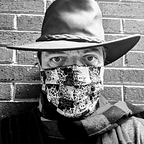Belated thanks to the “mammy” at the Alexander Home in the 1930s
From the volunteer “inmate” whose fed her sister thanks to you.
In 1923, The Daily Advance in Elizabeth City, N.C. published an article explaining how the State Board of Charities and Public Welfare in North Carolina had just licensed 25 childcare institutions in the state following a “detailed survey, of all these institutions, from the viewpoints of administration, financial condition, educational equipment and physical care of inmates.”
The lady who conducted the survey emphasized the need for ongoing physical examinations by the county health officer since the one institution that had consented to medical examinations housed 33 of 42 children in need of some attention, typically as a result of bad tonsils, adenoids and teeth. The physicians who conducted the examinations also recommended the Wassermann test (for syphilis) in a few instances, and “two mental defectives and one epileptic were discovered.”
The Alexander Home in Charlotte was one of the 25 institutions surveyed and licensed by the state in 1923, but its origins dated back to the 1880s as noted by Jack Claiborne, an Associate Editor of the Charlotte Observer, who wrote a history of the institution for its centennial in 1988:
“The Alexander Children’s Center…was an outgrowth of concern among women in two of Charlotte’s white Presbyterian churches…[and] owes its continued existence to the unyielding faith and unstinting service of those Presbyterian women and to the sustained giving of countless other church people throughout the Charlotte area.
The women’s concern was first stirred in the 1880s, when two of them went out for an afternoon’s carriage ride through Charlotte, then a town of about 7,000 people. Passing a black neighborhood, they encountered a woman, referred to in contemporary accounts as ‘a mammy,’ sheltering several white youngsters left homeless by their mother’s death and father’s desertion.
In a South growing increasingly sensitive to racial identities, the scene
distressed the white women, who went home to enlist their friends in an effort to rescue those children and give them a more appropriate home...”
Sometime around 1934 four orphan sisters became “inmates” at this institution after the death of their parents. At nine or ten years of age, the oldest girl was the last of the Day children to arrive at the facility. She had been given the choice to either remain at home with an older sister and her husband or go to the Alexander Home with her three younger sisters who she had helped care for after their parents died. In what she now describes as the best decision in her life, she volunteered to become an “inmate” at an institution that was being increasingly regulated by the State in a boom town whose population nearly doubled (from 46,000 to 82,000 between 1920 and 1930) in the aftermath of World War I (and Camp Greene).
Her father was a local farmer and sawmill operator who was hit and killed by a Southern Railway passenger train in 1931, and her mother (his second wife) died from cancer of the uterus four years later.
After being admitted to Alexander Home, the four orphan girls would not see their older brothers and sisters until 40 years later. In the early 1970s, they started researching their genealogy and tracked down their older siblings who they visited frequently into the late 1980s.
The two youngest sisters, just babies at the time of their parents’ death, were quickly adopted or sent to private homes for foster care. However, the oldest girl and her younger sister remained at Alexander Home for a longer period of time and would be befriended by a black “mammy” who cooked at the facility.
According to this volunteer “inmate” at the Alexander Home in the 1930s, her younger sister had a bed wetting problem and was made to wear a burlap tote sack dress with a pee pot hung around her neck all day long. She was also apparently sent to bed each night without any supper, but her older sister used to sneak her food which she received from the African American lady who cooked at the facility and washed dishes.
So, ironically, this institution founded in the 1880s by white Christian women who were distressed by the sight of a black “mammy” caring for white orphans would later house a white orphan in the 1930s who received her supper each night thanks to a black “mammy” who befriended her and her older sister. The bed wetting problem, and a bad case of tonsillitis apparently, persisted until both of the older sisters were sent to foster care. The three oldest orphans would eventually be raised by one of Andy Barker’s uncles and aunts in private foster care.
But on behalf of my mother, the oldest Day child and volunteer “inmate” at the Alexander Home in the 1930s, I want to extend her belated thanks to the black “mammy” who gave her the only food that my aunt had for supper there each night. It was an experience that my mother, now age 92, has never forgotten.
If you enjoyed this post, please click the heart to recommend it. You might also like my eBook about my paternal ancestors who settled in North Carolina.
